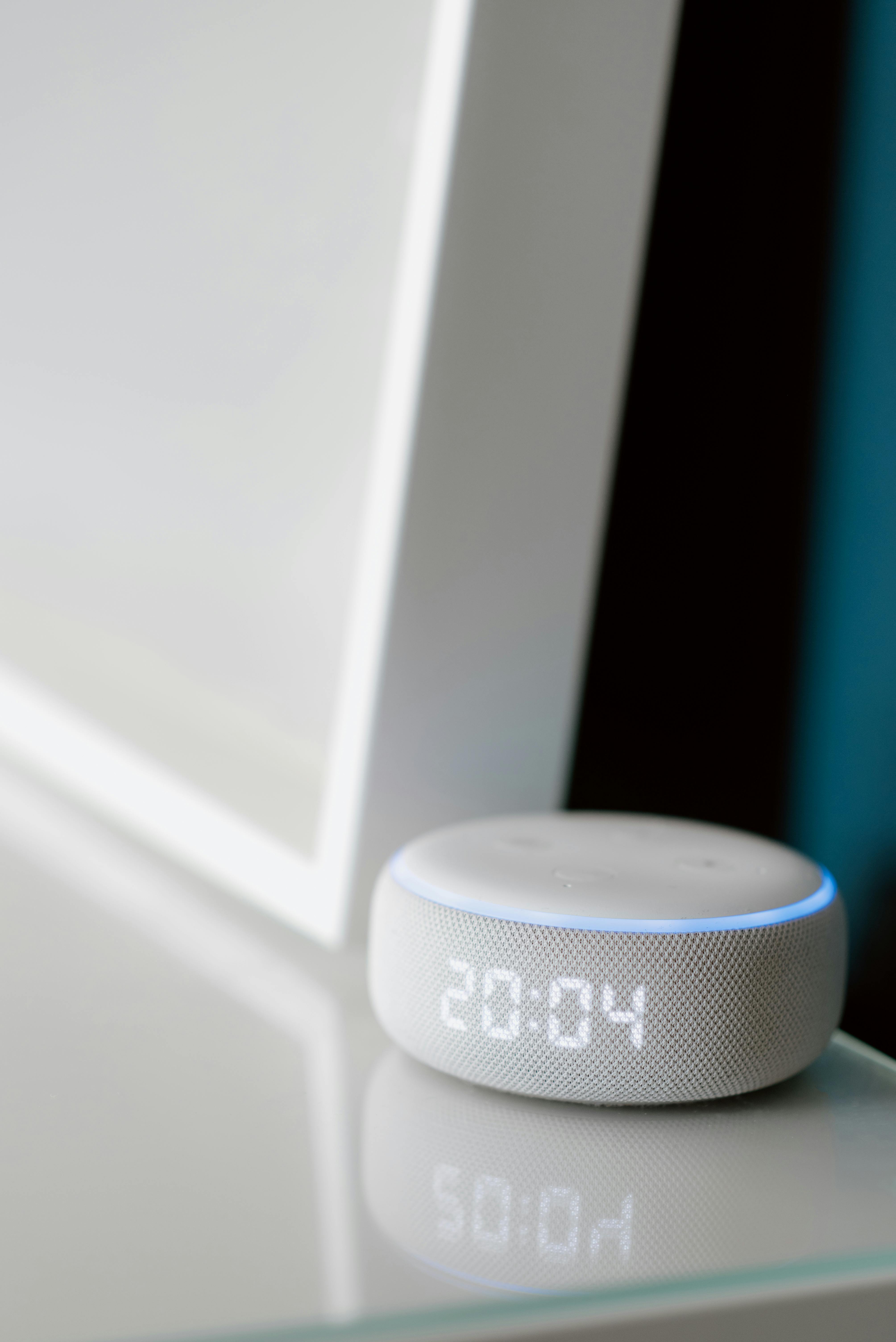🕓 Estimated Reading Time: 5 minutes
Overview
In the rapidly expanding ecosystem of smart home devices, Amazon's Echo line stands out as a dominant force. For many consumers venturing into this interconnected world, the initial choice often boils down to a fundamental question: echo vs echo dot. Both devices, powered by Amazon's artificial intelligence assistant, Alexa, offer seamless voice control, access to music streaming, news updates, weather forecasts, and smart home management. However, beneath their shared functionality lie distinct differences in design, audio capability, and price point that cater to varying user needs and preferences. Understanding these nuances is crucial for making an informed decision that aligns with an individual's lifestyle and budget, ensuring the chosen smart speaker serves its purpose effectively within the modern household.

Background & Context
Amazon first introduced the Echo smart speaker in 2014, pioneering the voice-controlled assistant market. Its cylindrical design and omnidirectional audio quickly established it as a centerpiece for smart homes. Following its success, Amazon diversified the lineup, launching the Echo Dot in 2016. The Dot was conceived as a more compact and affordable entry point, essentially distilling the core Alexa experience into a puck-shaped device. This strategic expansion allowed Amazon to capture a broader market segment, making smart home technology accessible to millions more. The evolution of both devices has seen multiple generations, each bringing improvements in audio quality, design, and processing power, alongside enhanced privacy features and integration with an ever-growing array of smart home standards. A comprehensive amazon echo comparison reveals that while both share the fundamental Alexa platform, they are designed to fulfill different roles within a connected home environment. The standard Echo, typically larger, prioritizes robust audio, often featuring multiple drivers for richer sound, making it suitable for primary listening areas. The Echo Dot, by contrast, focuses on affordability and ubiquity, designed to sprinkle Alexa's presence throughout a home without a significant investment in high-fidelity audio, serving well in secondary rooms or as a simple voice interface.
Implications & Analysis
The primary distinctions between the Echo and Echo Dot center on their audio capabilities, size, and price. The standard Amazon Echo is engineered with a larger speaker setup, often incorporating a woofer and multiple tweeters, delivering significantly richer, more immersive sound suitable for listening to music, podcasts, or audiobooks in a main living area. This superior audio quality comes at a higher price point, positioning the Echo as a standalone audio device capable of filling a room with sound. In contrast, the Echo Dot is designed with a smaller, single speaker, optimized for voice responses from Alexa and casual background audio. Its compact size makes it incredibly versatile, easily fitting onto a nightstand, shelf, or desk without occupying much space. The lower price of the Dot also makes it an attractive option for those looking to extend Alexa's reach into multiple rooms without investing heavily in a full-sized speaker for each location. For instance, a household might place an Echo in the living room for entertainment and several Echo Dots in bedrooms or the kitchen for quick commands and ambient functions.
Beyond audio, some generations of the standard Echo have included built-in smart home hubs, such as Zigbee, allowing for direct control of compatible smart devices without needing a separate hub. This feature simplifies smart home setups for users with a diverse range of connected devices. While all Alexa-enabled devices can control smart home gadgets via voice commands, the integrated hub in some Echo models offers a more streamlined experience for certain device types. Recent iterations of the echo dot features have also seen improvements, such as a built-in temperature sensor in the 5th generation, allowing for automated routines based on room temperature, and an Eero Built-in feature for extending Wi-Fi coverage with compatible Eero networks. The choice, therefore, hinges on priorities: exceptional sound and potential hub capabilities with the Echo, or affordability, compactness, and ubiquitous Alexa access with the Dot. For someone starting their smart home journey, or simply seeking voice control without a focus on high-fidelity audio, the Dot serves as an excellent, cost-effective entry point. For audiophiles or those seeking a central entertainment hub, the standard Echo often provides a more satisfying experience.

Reactions & Statements
Consumer feedback and industry analysis consistently highlight the Echo Dot's popularity as a gateway device into the smart home ecosystem. 'The Echo Dot has been instrumental in democratizing smart speaker technology,' noted a tech industry analyst in a recent market report. 'Its accessible price point means more households can experience voice AI, and from there, they often expand their smart home integrations.' Many users opt for a combination strategy: a larger Echo device for central entertainment and several Dots spread across the home for convenience. Reviews often commend the standard Echo for its superior audio performance, with some audiophiles considering it a significant upgrade over the Dot for music listening. Conversely, the Echo Dot is lauded for its unobtrusive design and affordability, making it ideal for secondary rooms. 'For most everyday tasks like setting timers, checking the weather, or controlling smart lights, the Dot performs just as well as its larger sibling,' commented a tech journalist specializing in smart home gadgets. The sentiment underscores that while sound quality is a differentiator, the core Alexa experience remains consistent across both devices, empowering users with voice control capabilities. This dual offering allows Amazon to cater to a broad spectrum of consumers, from those prioritizing sound fidelity to those seeking sheer affordability and widespread smart assistant access.
'The Echo Dot has been instrumental in democratizing smart speaker technology. Its accessible price point means more households can experience voice AI, and from there, they often expand their smart home integrations.' - Tech Industry Analyst
What Comes Next
Looking ahead, the evolution of Amazon's smart speaker lineup is expected to continue focusing on enhanced AI capabilities, improved audio fidelity in the larger models, and even greater integration within the broader smart home ecosystem. Future iterations may see more advanced on-device processing for quicker Alexa responses, further improvements in natural language understanding, and perhaps more sophisticated sensors for environmental monitoring or security. The trend towards sustainable design is also likely to influence future generations, with Amazon already incorporating recycled materials into its devices. As the smart home market matures, seamless interoperability between different brands and device types will become increasingly crucial. Amazon, through its Matter support and continuous development of the Alexa platform, aims to position its Echo devices as central hubs for this interconnected future. Furthermore, privacy and data security will remain paramount, with ongoing efforts to provide users with greater control and transparency over their data. The competition in the smart speaker market remains fierce, pushing Amazon to innovate constantly, ensuring that both the Echo and Echo Dot continue to offer compelling value and cutting-edge features for consumers navigating their smart home choices.
Conclusion
Ultimately, the decision between an Echo and an Echo Dot hinges on individual priorities and use cases. For those seeking a primary audio device for music enjoyment in a main living area, the standard Echo, with its superior sound output and potentially integrated smart home hub, presents a compelling choice. Its robust audio profile justifies the higher investment. Conversely, if the goal is to pepper Alexa's voice assistant capabilities throughout multiple rooms, or if budget and space constraints are key considerations, the Echo Dot is undeniably the more practical and economical option. Its compact size and affordability make it an excellent secondary device or a perfect entry point for new smart home users. This smart speaker guide underscores that neither device is inherently 'better' than the other; rather, they serve different niches within the same smart ecosystem. By carefully considering audio needs, desired features, and spatial requirements, consumers can confidently select the Amazon smart speaker that best enhances their daily life and aligns with their vision for a connected home.
Comments
Post a Comment